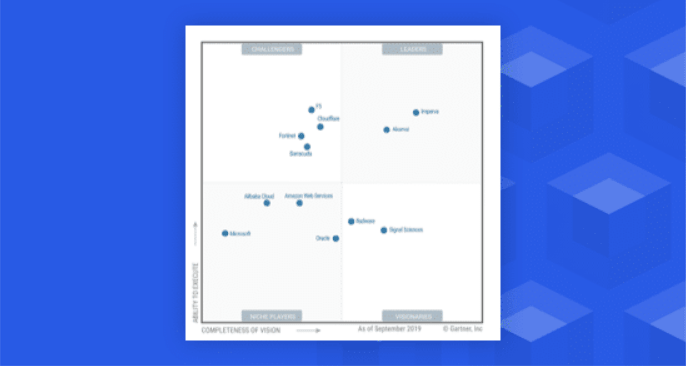
Navigating the Gartner Magic Quadrant for Web Application Firewalls: What You Need to Know
Welcome to the world of Gartner Magic Quadrant, where top-notch web application firewalls (WAFs) are evaluated and recognized for their excellence. If you’re a security professional who’s constantly looking out for ways to protect your organization from digital threats, then this post is definitely worth your time. In this article, we’ll take you through everything you need to know about navigating the Gartner Magic Quadrant for WAFs – from understanding the criteria used in evaluations to finding the right solution that aligns with your business objectives. So let’s dive in and explore what it takes to stay ahead of cybercriminals with a robust WAF strategy!
Table of Contents
What is a web application firewall?
The Gartner Magic Quadrant for web application firewalls
How to choose the right web application firewall for your business?
The benefits of using a web application firewall
The challenges of using a web application firewall
Conclusion
What is a web application firewall?
A Web Application Firewall (WAF) is a security appliance that sits between your website and the internet. It filters traffic going to and from your website, and can stop attacks such as SQL injection and cross-site scripting (XSS).
WAFs come in two main forms: hardware appliances and software. Hardware WAFs are physical devices that sit between your web server and the internet. Software WAFs are installed on your web server and work with your web server software to filter traffic.
Most WAFs work by looking for patterns of bad requests, and then blocking or flagging those requests. Some WAFs can also repair common types of attacks, such as SQL injection attacks.
When choosing a WAF, you should consider its features, ease of use, scalability, price, and support.
The Gartner Magic Quadrant for web application firewalls
There are two common types of web application firewalls (WAFs): network-based and host-based. Network-based WAFs are deployed in front of web servers and protect against attacks by inspecting traffic between the user and the server. Host-based WAFs are deployed on web servers and protect against attacks by inspecting traffic at the server level.
Gartner’s Magic Quadrant for web application firewalls is a comprehensive guide that evaluates and ranks the most popular WAF solutions on the market. The quadrant takes into account a number of factors, including functionality, performance, pricing, and customer satisfaction.
The top-rated WAF solutions in Gartner’s Magic Quadrant are: Imperva SecureSphere, F5 BIG-IP ASM, Citrix NetScaler AppFirewall, IBM Web Application Firewall, HP TippingPoint DVSA, and Barracuda Web Application Firewall.
How to choose the right web application firewall for your business?
When it comes to choosing the right web application firewall (WAF) for your business, there are a few key factors to keep in mind. First and foremost, you need to consider your budget and what you can afford to spend on a WAF. It’s also important to think about the size of your organization and the specific needs of your business when it comes to web security. Once you have a good understanding of these factors, you can start looking at different WAFs on the market and compare their features side-by-side.
One of the most important things to look for in a WAF is comprehensive protection against all types of attacks. This includes SQL injection, cross-site scripting (XSS), and session hijacking, among others. The best WAFs will also offer additional features like intrusion detection and prevention, as well as malware scanning and removal. Another thing to keep in mind is ease of use; you want a WAF that is easy to deploy and manage so that you can get up and running quickly without any headaches.
Finally, make sure to read reviews from other users before making your final decision. See what others have to say about different WAFs on the market and get a feel for which ones might be the best fit for your business. With so many options available, taking some time to do your research upfront will pay off in the long run.
The benefits of using a web application firewall
There are many benefits to using a web application firewall (WAF), including improved security, increased performance, and better compliance.
Here are some of the most important benefits:
Security: A WAF can help protect your website or web application from attacks such as SQL injection and cross-site scripting. By filtering incoming traffic and requests, a WAF can block malicious traffic before it reaches your servers. This helps to improve the overall security of your website or web application.
Performance: A WAF can help improve the performance of your website or web application by caching static content and eliminating unnecessary processing of dynamic content. This can help to reduce the load on your servers and improve overall page load times.
Compliance: A WAF can help you meet compliance requirements such as PCI DSS and HIPAA. By ensuring that all traffic passing through your firewall is compliant with these regulations, you can help avoid costly fines and penalties.
The challenges of using a web application firewall
Web Application Firewalls (WAFs) are an important layer of defense for web applications. However, there are a number of challenges that need to be considered when deploying a WAF:
False positives and false negatives: A WAF can generate both false positives (incorrectly identifying legitimate traffic as malicious) and false negatives (failing to identify malicious traffic). This can create a challenge for administrators, who need to tune the WAF to reduce the number of false positives and negatives.
Evasive attacks: Some attackers will specifically target WAFs in an attempt to bypass them. In order to counter such evasive attacks, WAFs need to be constantly updated with the latest signatures and rules.
Overloading the system: WAFs can place a significant load on web servers, due to the increased processing required to inspect all traffic. This may impact the performance of the web application, especially during peak times.
Limited visibility: A WAF can provide only limited visibility into what is happening on a web server, as it is only able to see the traffic that is passing through it. This means that it is not possible to use a WAF as a sole source of information for security analysis.
Conclusion
The Gartner Magic Quadrant for Web Application Firewalls is a great resource for businesses looking to stay ahead of the curve in web security. With an understanding of the criteria and components that make up the quadrant, organizations can accelerate their decision-making process when selecting the most appropriate security solution for their needs. By paying special attention to vendors’ product strengths, weaknesses and vision going forward, organizations can be better informed on how certain solutions fit into their overall strategy.


